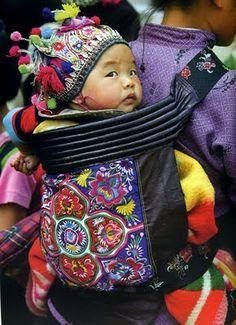Mama, Carry Your Breastfed Baby
- ittasteslikelove
- Aug 5, 2021
- 4 min read
Babywearing and breastfeeding have always been the perfect pairing
By Dee Burton and Esther Wong
Additional research by Christine Ng

Babywearing has been a part of human life for thousands of years.
Babies want to be carried. It is part of our evolution and biology. You can see that when picked up, babies naturally tuck their legs into a frog position and their spines curve into towards you.
Early human mothers were hunters and gatherers. They needed to gather food whilst carrying their infant children and it is believed that this led to the creation of the sling, one of the first inventions made by humankind.
American anthropologist Sarah Blaffer-Hrdy (2000) suggests that 50,000 years ago, this “technological revolution” allowed mothers to carry food as well as their babies, leading to a new division of
labour between men and women.
She suggests this led to better fed mothers, who gave birth after shorter intervals, and an expanding human population moving out of Africa.” (1)
Fellow anthropologist Timothy Taylor has argued that the early adoption of carrying aids
made from natural materials such as animal skin or woven reeds, may have
been used to create a carry-assist to help transport baby across longer distances and that this played an important role in human evolution.

Early Egyptians carried their babies in cloth slings. In other parts of the African continent, mothers used a ‘kanga’ - a piece of fabric that is tied around baby and mum so they can stay close to each other even while travelling distances or while gathering food. In China, the Meh Dai - a rectangle piece of fabric with four long straps to tie at the waist and shoulder the waist and shoulder - has been used as a babywearing tool for generations.
The Japanese have long used an cloth entwined with string that goes under baby's arms, over mum's shoulders and then loops back to support baby's legs. In Europe there were special shawls to carry infants, in Greenland, seal skin was used to make a coat with a pouch for baby to sit in which shielded them from freezing temperatures. And in North America, they used a cradleboard, where baby was wrapped tightly with cloth and strapped on to a flat board before being carried in arms or on the back.
It's clear that babywearing has been a key part of many cultures worldwide but in the last 50 years there's been a rapid expansion in both the design and technology creating a booming industry.

In 1971, Erika Hoffman a mother of four, used a woven fabric wrap to carry a baby started
the first modern woven wrap company called Didymos. A decade later the first ring sling was made by
Rayner Garner, a physiotherapist in Hawaii with an interest in good posture, who wanted to
make a more comfortable carrier for his daughter. (2)
Then came the arrival of soft structure baby carriers from companies such as Ergo Baby
and Baby Tula, which are popular with many parents today.
Whilst baby carriers have changed over time, they all serve the purpose of enabling caregivers to keep babies close whilst still being able to have their hands free, or to travel longer distances. They also help ensure baby's safety and satisfy their need to be held.
Benefits of Babywearing:
- It helps create secure attachment, positive bonding and connection between baby
and their caregivers
- Baby is calmer and cries less as their needs are being met quickly
- It helps enhance growth and weight gain in premature baby
- As baby can see the adult’s face, they are more receptive and it enhances their learning
and speech development
- Parents and carers have their hands free and can get tasks done
- By keeping baby upright in a carrier, babies with reflux are more comfortable and
able to sleep better.
The Breastfeeding Connection

Another important benefit of babywearing is that it helps provide an opportunity for skin to
skin contact which in turn helps promote oxytocin which helps stimulate let down for
breastfeeding mums.
In 2012, a study in Italy showed that carrying a baby in a sling during the first few months after birth helped increase the breastfeeding rate amongst full term babies.
Babywearing helps facilitate breastfeeding.
By keeping baby close, parents often respond to cues faster, which helps establish milk supply and ensures
baby can be fed on demand, which is often crucial to successfully breastfeeding. Being able to feed on the go, having your hands free, and being able to feed wherever you are - discreetly if needed - all make breastfeeding in the modern world easier to manage.
Breastfeeding in the carrier is a learnt skill, but it CAN be done in most carriers.
History has shown how interconnected both babywearing and breastfeeding have been in
the success of raising babies in different cultures and countries. Breastfeeding was
important to ensure the survival of the infant, and babywearing provided the working
mother a better chance of protecting her child in a variety of climates and working
environments. By mastering both, our ancestors had a significantly improved chance of
growing up and surviving to a mature age.
Our lives may have changed, we may be busier than ever but that is why babywearing is more crucial than
ever as we try to improve breastfeeding rates worldwide.
Read out guide to breastfeeding in baby carriers here.




Comments